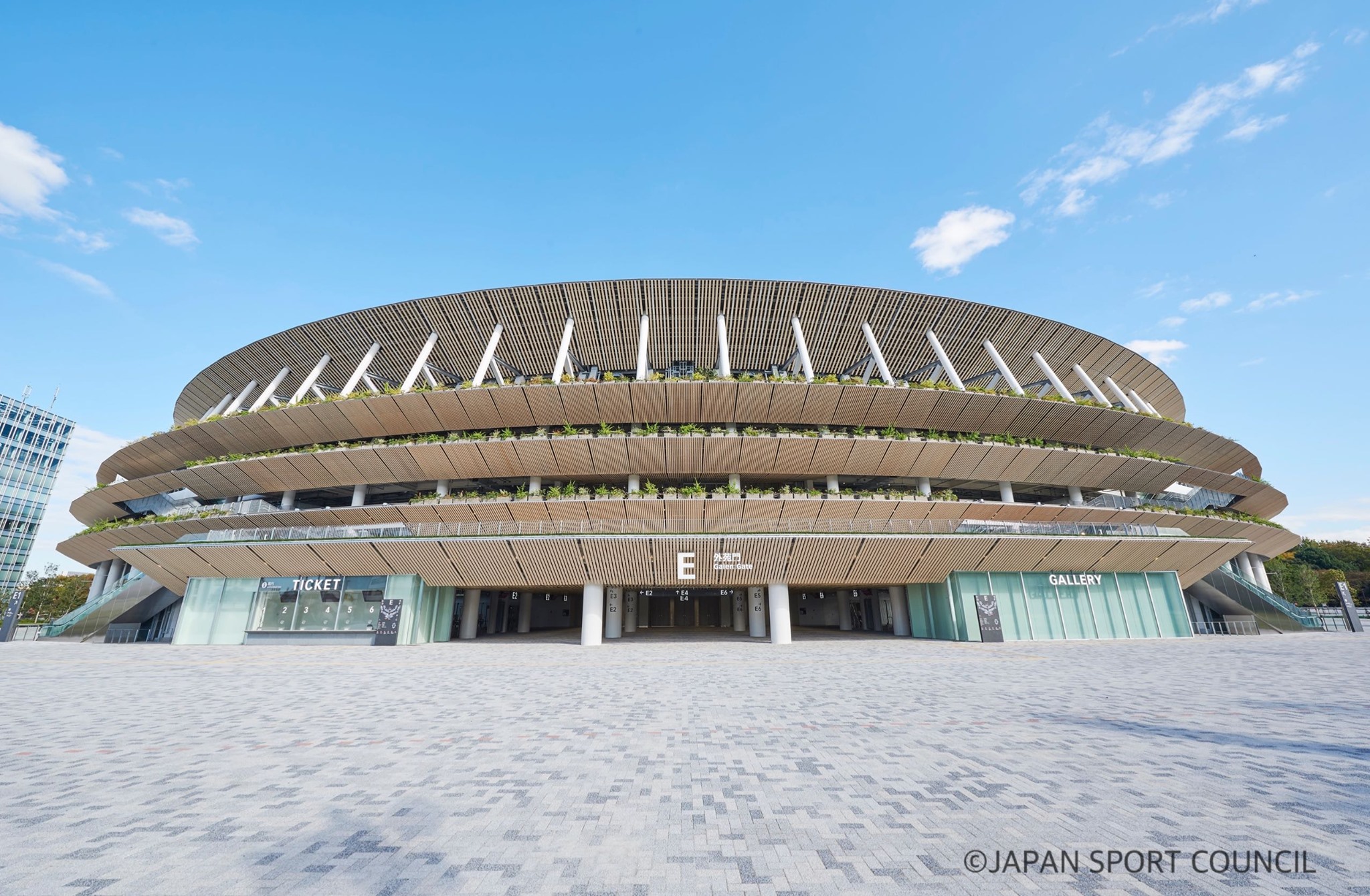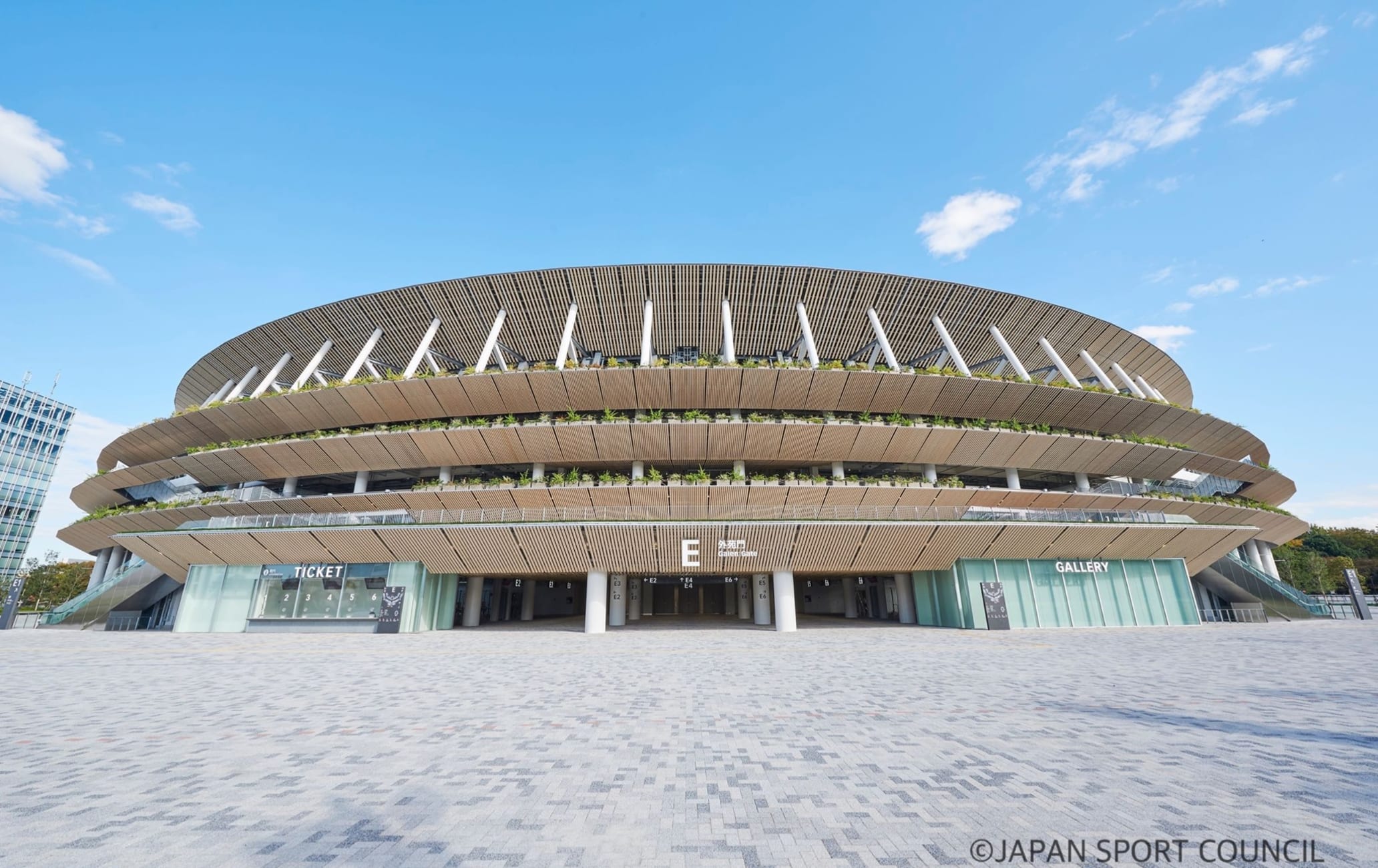Tokyo 2020—The New National Stadium
The New National Stadium is the centerpiece of Tokyo's Olympic and Paralympic facilities. The distinctive wooden lattice framework and design blends ultra-modern and traditional Japanese architectural techniques, including 70,000 cubic feet of Ryukyu Pine and cedarwood, symbolically taken from all of Japan's 47 prefectures.
The 68,000-seat stadium, located a stone's throw from the outer gardens of Meiji-jingu Shrine and within sight of the skyscrapers of Shinjuku, will host the opening and closing ceremonies for both the Olympics and Paralympics, as well as track and field events and several soccer matches.
The 157-billion-yen (1.4 billion USD) stadium was a joint enterprise between renowned architect Kengo Kuma, Taisei Corporation and Azusa Sekkei.
Don't Miss
- Fluid lines of wood and steel
- The beautiful structure inspired by a pagoda
- Unobstructed views from every seat and sloped seating
How to Get There
The stadium is a one-minute walk from Kokuritsu-Kyogijo Station on the Toei-Oedo Subway line or five minutes on foot from Sendagaya Station on the overland Chuo-Sobu line, operated by East Japan Railway Co. Alternatively, it is a 15-minute walk from Gaienmae Station on the Ginza subway line.

A design for the 21st Century
The beautiful stadium was built with both practicality and style in mind: Japan's opportunity to showcase its advanced technology and eye for design. The wooden elements give the stadium a highly distinctive—and very Kengo Kuma—aesthetic. The three stories slope steeply so that even those in higher seats can feel the buzz of the games on the field.

Most importantly, Kuma has addressed concerns about the Tokyo summer heat by creating a structure that is designed to let in the wind. Layered eaves, like those seen in traditional Japanese pagodas, have been implemented to "catch" the wind and redirect it throughout the stadium to control the heat and humidity for spectators and athletes alike. Tiered levels have vegetation on various concourses and the design has been broadly welcomed for its clever use of greenery.
The original National Stadium
The stadium stands on the site of the previous National Stadium, which hosted the 1964 Summer Olympic Games. These Games were the first Olympics to be held in Asia and the first to be broadcast around the world in color (albeit partially). For Japan, the Games were deeply symbolic of the rebuilding of the nation after the devastation of World War II and its reintegration into the international community. Emperor Hirohito officially opened the 14-day event.
The stadium hosted the Asian Games and athletics World Championships as well as international and domestic soccer and rugby matches. It was also the venue for a concert by The Three Tenors in 1996.
Despite this rich legacy, however, there were problems. The stadium's capacity was less than 60,000, it had no roof for the majority of spectators, and had suffered general wear-and-tear. Therefore, the government decided to demolish the structure and replace it with a state-of-the-art facility—one suitable for a city bidding to host the 2020 Games.

Overcoming issues
In November 2012, the Japanese government announced that British-Iraqi architect Zaha Hadid had won the bid for the design of the new stadium with a truly space-age concept. However, concerns with costs and aesthetics led to the shelving of that plan. Japanese architect Kengo Kuma then took over the reins in collaboration with construction firms Taisei Corporation and Azusa Sekkei.

A facility for the present and future
Athletes representing 151 nations will parade into the 68,000-capacity stadium during the Opening Ceremony to kick off the Olympic buzz. Athletic heats will make up many of the initial events, leading up to the crown jewel in the track and field calendar—the men's 100-meter final. After the Closing Ceremony, organizers have 16 days to prepare the venue for the Paralympic Games, which will see around 4,400 athletes competing in 22 sports.
Once the games are over, the stadium will be used for soccer and rugby matches for Japan's national teams, as well as hosting domestic cup finals. The stadium is central to Tokyo's future bids for other major regional sporting tournaments, such as the Asian Games or the Asian Athletics Championships. The government has also confirmed that it will be used for cultural events.
























































